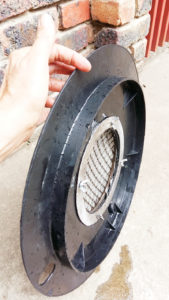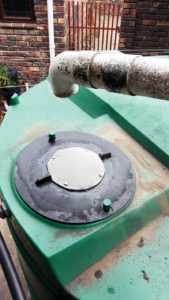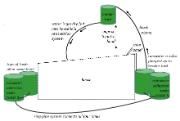Some guidelines to help you manage during water cuts, and even become independent of an unreliable municipal water supply, courtesy Rhodes University’s Environment Resources page.
General Guidelines for Collecting Rain Water
Roof
10mm of rainfall on a surface area of 100m2 will yield 1000 litres of rain water.
Gutter & downpipe
Essential for capturing and guiding rainwater into tank. Ensure gutters are cleaned from time to time!
Tank
Use a good quality tank, preferably with black lining, to prevent growth of algae.
Filtration
(a) Before:
Keeps rain water clean and odourless – use a Pre-Filter (see below), or other options such as: Water Rhapsody Rain Runner | Sinvac First Flush Diverter | First flush bucket.
(b) After:
Use a layered filter system that adds in essential minerals and cleans the water, such as Water Well Mineral Pot.
Tank stand
A correctly constructed base provides stable support; allow sufficient height so that a bucket can be placed under the tap.
Tap
A plastic irrigation tap is less likely to be stolen; include fitting to attach hosepipe, if required.
Overflow
Attach a thick black pipe to overflow outlet, use an adaptor to connect it to hose-pipe (guided to any part of garden as desired).
Connect to household
Your rainwater supply can be plumbed into your household water reticulation system.
Rain Water Tank Pre-Filter
Filter roof water before it enters the tank to keep your tank free of debris, mosquitoes, rats and other unwanted items that will decompose and pollute the water. Nikki’s low-maintenance, dome-shaped pre-filter needs the following:
* 1 x support ring (flat, approx 2cm wide, 21cm outside diameter), stainless steel;
* 4 x bolts, nuts & washers, stainless steel;
* 1 x coarse support mesh, round (approx 21cm diameter), dome-shaped (approx 5cm at highest point), stainless steel (the head of a large, Chinese style kitchen strainer is ideal);
* 1 x round piece of fine mesh (approx 24cm diameter), grade 316 stainless steel (0.406mm hole x 0.17mm wire strand);
* 1 x tube of marine grade silicone sealant.
Procedure
Note underside view of pre-filter,
secured in place in the rain tank lid (right).
* Cut a hole in the rain water tank lid, approx 19cm diameter;
* Drill 4 holes in the support ring, for the bolts;
* Cut a circular piece of fine mesh, approx a 24cm diameter;
* Fit the fine mesh over the dome-shaped support mesh, folding it carefully over the rim, clamp to keep the folded fine mesh in place under the rim of the support mesh;
* Using the 4 holes in the support ring as a guide, drill smaller holes through the fine mesh and through the tank lid;
* Place the support ring against the underside of the tank lid, and the mesh structure above, with the holes correctly aligned;
* Secure the filter to the rain water tank lid with the bolts, nuts & washers;
* Silicone seal all around the edge and fill any gaps.
(an engineering firm would charge approx R400-500 for materials and labour)
* Ensure the gutter downpipe is suspended at least 12cm above the pre-filter system, to allow space for debris to slip off or blow away.
Maintenance
Because of the dome shape, most debris should slip off the pre-filter.
Do a visual check from time to time, especially after rain.
If any debris is present, sweep off lightly with a soft broom. If necessary, remove the tank lid and sweep the pre-filter with a soft brush under running water. Replace immediately.
Connect to household water reticulation system
Harvest rainwater off the roof into at least five 5000-litre tanks which are placed so that their tops are on the same level, and connected with a ring pipe, for optimal water collection and storage.
Pipe the rainwater, using a solar pump, to a header tank at least 6 metres higher, from which water can be gravity-fed into the house water reticulation system.
You may choose to retain a municipal connection – just in case.
Contact a service provider, such as Green Overall, to connect your rainwater supply to your household water reticulation system.
Health Considerations
Rainwater is considered to be a safe source of drinking water. Almost no accounts of illness are associated with drinking it.
Mineral content
Depends on local air quality, generally ‘soft’ (low mineral content).
Use a layered filter system that adds in essential minerals (and cleans the water), such as Water Well Mineral Pot.
Asbestos
No related diseases linked to rainwater from asbestos roofs, gutters or tanks.
More info: long-term research findings, asbestos affects mainly lungs, EPA proposed concentration, asbestos natural occurrence.
Bird droppings
Denatured by sun, heat and dehydration.
More info: conference paper, Civil Research Group.
Mosquitoes
Keep out with a Pre-Filter (see above).
Rats
Keep out with a Pre-Filter (see above).
- Compiled by Nikki Kohly, Rhodes University’s Safety, Health and Environment officer. Find more information about saving water on Rhodes University’s Environment Resource page: http://www.ru.ac.za/environment/resources/water/rainwater/




